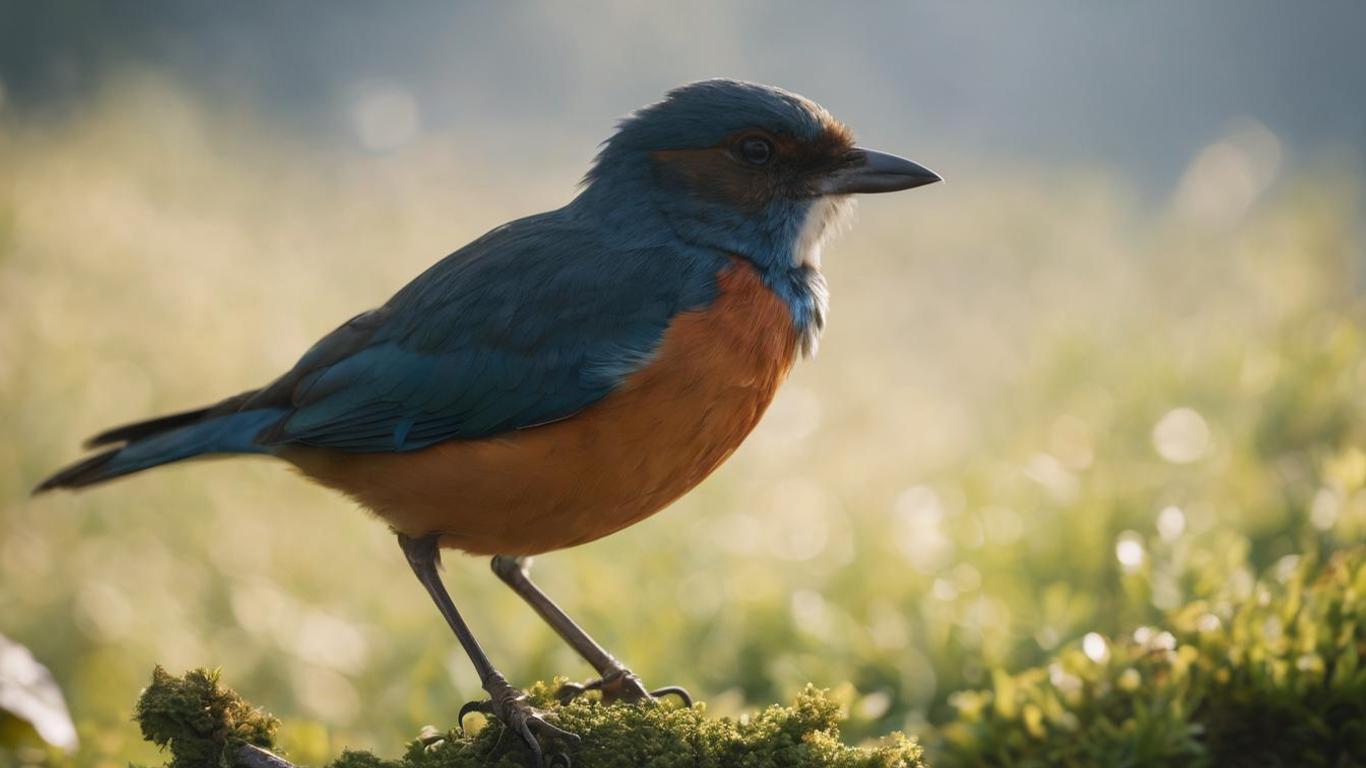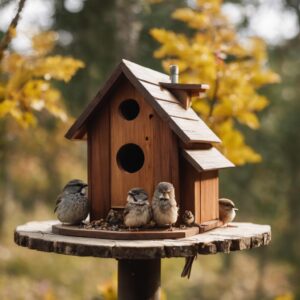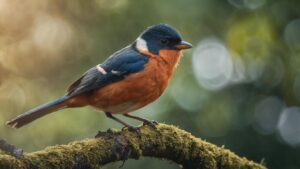
Discovering the Diversity of Bird Species
Contents
- 1 The World of Avian Biodiversity
- 2 Habitats: Exploring Where Birds Call Home
- 3 Adaptations: How Birds Have Evolved to Thrive
- 4 Feathers: An Amazing Tool for Flight and Survival
- 5 Colors and Patterns: The Stunning Variations in Avian Plumage
- 6 Beaks and Bills: The Diversity of Bird Feeding Adaptations
- 7 Songs and Calls: Understanding the Language of Birds
- 8 Migration: The Incredible Journeys of Avian Species
- 9 Endangered Birds: The Importance of Conservation Efforts
- 10 Human-Bird Interactions: From Birdwatching to Avian Symbolism
The World of Avian Biodiversity
Birds are one of the most diverse groups of animals found on our planet. With over 10,000 species worldwide, they inhabit a wide range of environments, from icy polar regions to tropical rainforests. This incredible diversity is a result of birds’ ability to adapt to various ecological niches, allowing them to thrive in different habitats.
From tiny hummingbirds to majestic eagles, avian biodiversity encompasses a plethora of sizes, shapes, and colors. Different species have evolved distinct characteristics that make them unique and perfectly suited to their respective environments. These adaptations can be seen in their beaks, wings, and plumage, as well as their behaviors and feeding habits. The world of avian biodiversity is a fascinating tapestry of life, with each bird embodying its own remarkable attributes.
Habitats: Exploring Where Birds Call Home
Birds are found all over the world, residing in a wide range of habitats. From forests to grasslands, from deserts to wetlands, birds have adapted to diverse environments. Their ability to thrive in different habitats is a testament to their remarkable adaptability.
One of the most common habitats for birds is the forest. Forests provide birds with abundant food sources, shelter, and nesting opportunities. Different species can be found at different levels of the forest, with some preferring the canopy, others the understory, and some even the forest floor. Each layer of the forest offers unique resources and challenges for birds, leading to a rich diversity of species.
Adaptations: How Birds Have Evolved to Thrive
Birds have evolved a wide range of adaptations that allow them to thrive in various environments around the world. One crucial adaptation is their beak morphology, which corresponds to their feeding habits. For example, birds with long, slender beaks, such as hummingbirds, have evolved to feed on nectar from flowers, relying on their specialized tongues to draw in the sweet liquid. On the other hand, birds with sturdy, hooked beaks, like eagles and owls, have developed to seize and tear apart their prey. This diversity of beak adaptations showcases the incredible ingenuity of birds in exploiting different food sources.
In addition to beaks, the plumage of birds also plays a vital role in their survival and reproduction. The colors, patterns, and structures of feathers serve various purposes, from camouflage to attracting mates. For instance, male birds often display vibrant and elaborate plumages during breeding seasons to catch the attention of females. In contrast, female birds may have more muted or camouflaged plumage to protect themselves and their offspring from predators. Feathers also contribute to flight capability, providing the necessary lift and aerodynamic control for birds to navigate the skies with precision and efficiency. The remarkable adaptations seen in birds’ beaks and feathers highlight the remarkable evolutionary processes that have shaped these remarkable creatures.
Feathers: An Amazing Tool for Flight and Survival
Feathers play a crucial role in the lives of birds, serving as remarkable tools for both flight and survival. These lightweight structures, composed primarily of keratin, provide birds with the ability to take to the skies with ease. The unique structure of feathers allows for an efficient and streamlined flight, enabling birds to soar across vast distances and navigate through varying air currents. From the intricate arrangement of barbs and barbules to the strength and flexibility of the shaft, feathers are a marvel of natural engineering.
Not only do feathers facilitate flight, but they also provide birds with vital protection and insulation. Different types of feathers serve different purposes, with contour feathers providing the outer layer that helps birds maintain their sleek and aerodynamic shape. Down feathers, on the other hand, are soft and fluffy, acting as excellent insulators to keep birds warm in cold environments. In addition, specialized feathers such as filoplumes and bristle feathers serve sensory functions, providing birds with information about their surroundings. Feathers, in all their diversity and intricacy, are truly extraordinary adaptations that have allowed birds to conquer the skies and thrive in various environments around the world.
Colors and Patterns: The Stunning Variations in Avian Plumage
The world of avian biodiversity is a kaleidoscope of vibrant colors and intricate patterns. Birds display an astonishing array of plumage, ranging from brilliant hues of red, blue, and yellow to subtle tones of gray, brown, and black. These colors are not merely an aesthetic delight; they play a crucial role in avian biology and survival. The variations in avian plumage are primarily driven by a combination of genetic factors, environmental influences, and sexual selection. Each species has its unique combination of colors and patterns, enabling them to blend seamlessly into their habitats or stand out for courtship displays.
Patterns in avian plumage are equally fascinating, ranging from stripes and spots to intricate mottling and scalloping. These patterns not only enhance a bird’s camouflage but also provide visual cues for species recognition and communication. For instance, some birds have bold patterns on their wings and tail feathers, which serve as signals during courtship rituals. The intricate patterns, coupled with their ability to change during molting, reflect the incredible adaptability of birds and their extraordinary evolutionary history. The stunning variations in avian plumage truly highlight the remarkable beauty and diversity of the avian world.
Beaks and Bills: The Diversity of Bird Feeding Adaptations
Bird beaks and bills come in a wide range of shapes, sizes, and functions, reflecting the incredible diversity of avian feeding adaptations. These specialized tools allow birds to obtain their necessary nutrition, whether it be foraging for fruits, catching insects on the wing, or probing the depths of flowers for nectar. For instance, the long and slender beak of a hummingbird is perfectly suited for sipping nectar from flowers, while the hooked bill of a falcon enables it to tear apart its prey with ease. Some birds, like the iconic pelican, have unique pouches attached to their bills, which they use to catch fish in a swift and efficient manner. From the delicate to the powerful, the array of beaks and bills found in the avian world is truly remarkable.
Beyond simply aiding in obtaining food, bird beaks and bills also play a crucial role in determining a bird’s ecological niche and competition for resources. This diversity in feeding adaptations allows different species to occupy distinct niches, reducing direct competition and facilitating coexistence in ecosystems. For example, a woodpecker, with its chisel-like beak, can easily drill holes in tree trunks to find insects, while a seed-cracking finch uses its strong, conical bill to access the nutrients within seeds. Bird beaks and bills have evolved through natural selection, constantly adapting to their specific feeding requirements and enabling birds to exploit available food sources in their environment. From seed-eaters to fish-eaters, each unique beak or bill is a testament to the evolutionary wonders of avian biodiversity.
Songs and Calls: Understanding the Language of Birds
Birds are known for their melodic songs and distinct calls, which play a crucial role in their communication and survival. Their songs are not just pleasant to the human ear; they serve various essential functions within avian communities. Songs are primarily used by male birds to establish and defend their territories, signaling their presence and warning potential rivals to stay away. Additionally, songs are also a way for birds to attract mates during the breeding season. The complexity and diversity of bird songs are truly remarkable, with different species having their own unique repertoire of notes, melodies, and rhythms.
Calls, on the other hand, serve a more immediate and practical purpose for birds. These vocalizations are typically shorter, simpler, and used for specific situations or messages. Birds utilize calls to communicate a range of information to one another, such as signaling danger, alerting others to the presence of food, or coordinating group activities like migration. Calls can also be used for establishing contact between parents and offspring, assisting in locating each other in dense forests or tall grasses. The variation in calls is immense, with some birds producing sharp, piercing calls, while others emit softer, more melodious tones. Understanding these intricate songs and calls is crucial in unraveling the complexity of avian communication and shedding light on the fascinating world of birds.
Migration: The Incredible Journeys of Avian Species
Every year, millions of birds embark on incredible journeys across vast distances, in what is known as migration. These journeys are not only astonishing from a physical standpoint, but they also play a crucial role in the lives of avian species. Migration allows birds to seek out more favorable breeding grounds, access abundant food sources, and escape harsh climates. It is a truly remarkable phenomenon that showcases the adaptability and resilience of these feathered creatures.
One remarkable aspect of bird migration is the precision with which they navigate their way across long distances. Without the aid of maps or GPS, birds rely on a combination of various innate and learned skills. Many species navigate using celestial cues, such as the position of the sun and stars. Others rely on landmarks and geographical features, such as coastlines or mountain ranges. Some species even possess the ability to detect Earth’s magnetic field, acting like a natural compass. Through a combination of these mechanisms, birds are able to successfully find their way to their desired destinations, often returning to the same breeding grounds or wintering sites year after year.
Migration serves not only the individual birds but also plays a vital role in the broader ecosystem. By moving between different habitats, birds become crucial agents in dispersing seeds and pollen, aiding in the distribution and regeneration of plant species. Additionally, the arrival of migrating birds often triggers a chain reaction in the ecosystems they visit, influencing the behavior and dynamics of other organisms. Their presence can have cascading effects on insect populations, predator-prey relationships, and even the structure of vegetation. Migration, therefore, is not just an awe-inspiring phenomenon but a fundamental process that shapes the functioning and biodiversity of the natural world.
Endangered Birds: The Importance of Conservation Efforts
The survival of endangered birds is crucial for maintaining the delicate balance of ecosystems. As environmental conditions change and habitats are increasingly threatened, many bird species find themselves on the endangered list. These birds are not just charming creatures; they play vital roles in pollination, seed dispersal, and pest control. The loss of these species can have far-reaching implications, not only for other wildlife but also for human populations relying on these ecosystem services. Conservation efforts aimed at protecting and restoring habitats, implementing effective breeding programs, and raising awareness about the plight of endangered birds are therefore vital to their survival and the health of our planet.
Efforts to conserve endangered birds involve a multi-faceted approach that encompasses scientific research, habitat conservation, and education. Scientists play a crucial role in studying the behavior and ecology of endangered bird species, as well as monitoring their populations and identifying the root causes of their decline. By understanding their biological needs and breeding strategies, conservationists can design and implement targeted conservation plans, such as creating protected areas or restoring degraded habitats. Furthermore, education and public outreach programs are essential in raising awareness about the importance of endangered bird conservation and inspiring individuals and communities to take action. Together, these efforts strive to safeguard the future of endangered bird species and ensure their place in the intricate tapestry of our natural world.
Human-Bird Interactions: From Birdwatching to Avian Symbolism
Birdwatching has long been a popular pastime for nature enthusiasts all over the world. From binoculars in hand, these individuals brave the early mornings and venture into the great outdoors, seeking the sight of their favorite avian species. The joy and excitement that come from spotting a rare or beautiful bird in its natural habitat can hardly be put into words. Birdwatching not only allows people to appreciate the incredible diversity of birds but also provides an opportunity to observe their behavior, learn about their habits, and expand our knowledge of these fascinating creatures.
Beyond the realm of birdwatching, birds have also played a significant role in human culture and symbolism. Across different societies and throughout history, birds have often been depicted as powerful and majestic creatures, embodying various qualities and values. From the ancient Egyptians who revered the falcon-headed god Horus, to the Native American tribes who saw the eagle as a symbol of strength and freedom, birds have always captivated our imagination. The ability of birds to soar through the sky, their vibrant plumage, and their melodious songs have sparked our creativity and inspired countless artworks, poems, and stories. Whether as symbols of peace, wisdom, or even as messengers between the human and spiritual realms, birds continue to hold a special place in our hearts and minds.



Average Rating